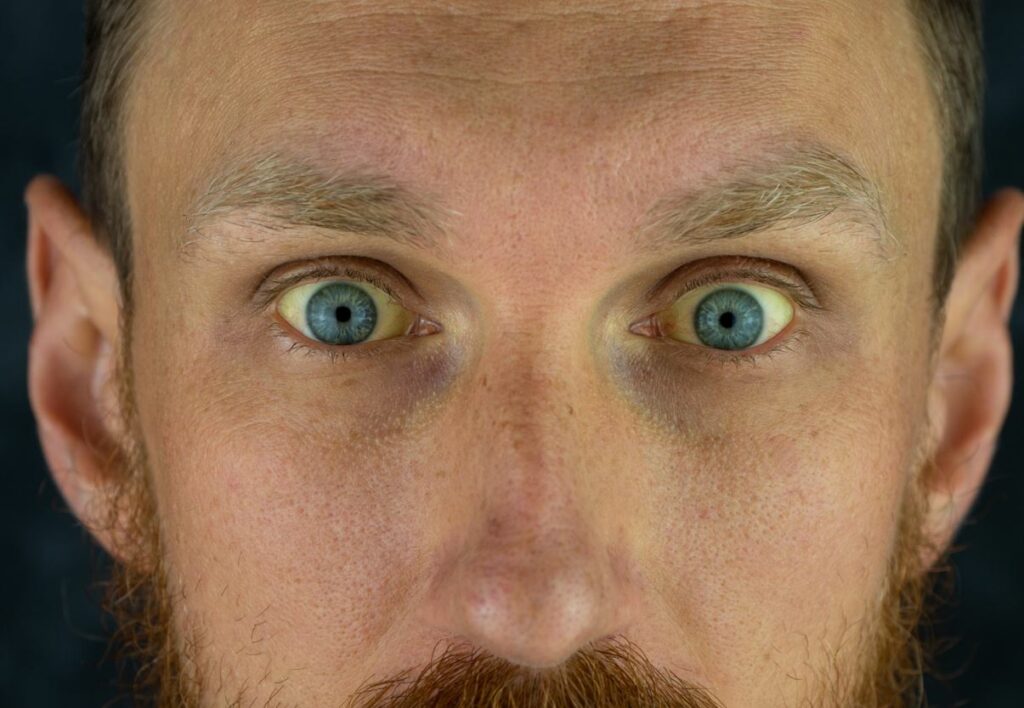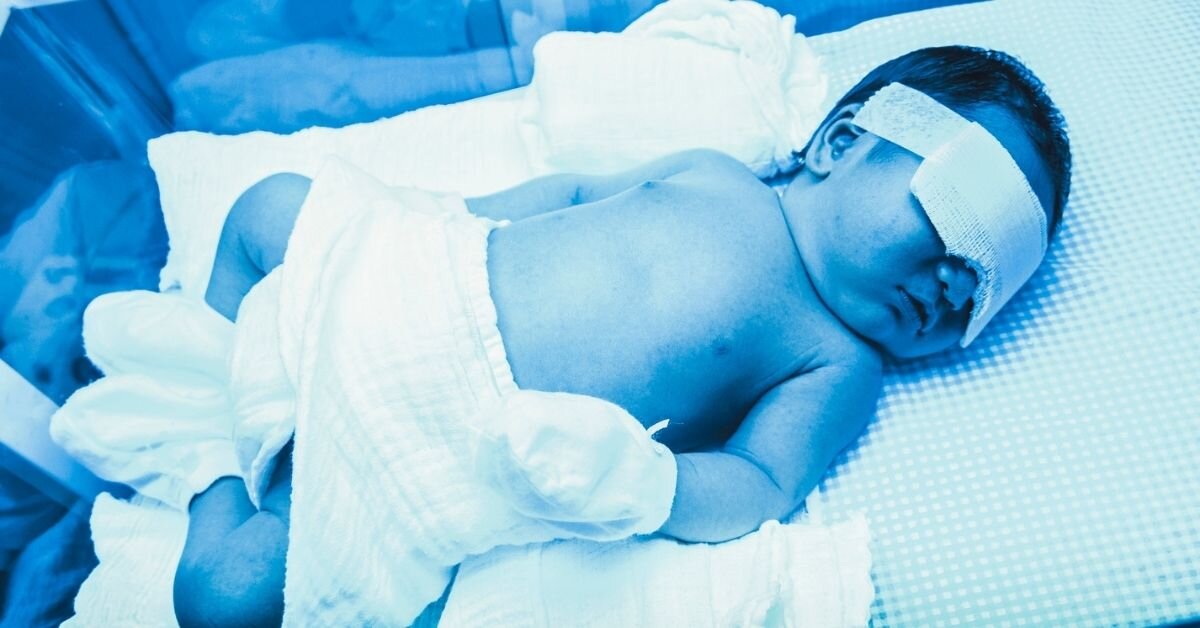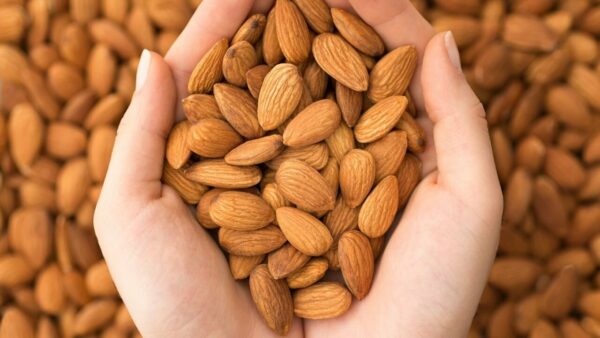You must have heard of jaundice medically this condition is also termed Icterus the characteristic Symptoms of jaundice is a yellowish discoloration of the sclera (white of the eyes), skin mucous membranes, and nails. Jaundice is not a disease but a noticeable sign of some underlying health issue marked with an increased bilirubin level in the blood.
Therefore, before discussing details about jaundice symptoms, it is imperative to learn what bilirubin is?
What Is Bilirubin

Bilirubin is a yellow-orange-colored waste compound produced by the degradation of hemoglobin from red Blood cells. Usually, the level of bilirubin in the blood is below 1.0mg/dL.
However, when this level increases above 2-3mg/dL, bilirubin leaks into the surrounding tissues causing the mucous membranes, skin, and sclera to turn yellow-orange.
The liver is an organ that processes bilirubin; thus, jaundice is considered as an indication of improper functioning or damage of the liver in adults. Therefore, it is imperative to identify and manage the cause behind high blood bilirubin levels, or it may lead to liver failure.
Jaundice may happen at any age. However, in infants, it is expected that jaundice may peak 3 to 5 days after birth. This is known as neonatal jaundice and goes away on its own in a few days.
Our article will discuss infant jaundice and adult jaundice separately. Let us first talk about neonatal jaundice.
Neonatal jaundice
- Infants have extra red blood cells that
- starts breaking after birth. In addition, the liver of the babies is slow
- in processing bilirubin. This results in neonatal jaundice. In healthy
- new-borns, jaundice peaks three to five days after the birth and goes on its own
- if you breastfeed the baby properly. In addition, the doctor may advise exposing the baby to morning sunlight.
Another type of jaundice, known as “breastfeeding jaundice, “in breastfeeding babies happens due to inadequate intake of milk.
There is one less common type of neonatal jaundice, known as breast milk jaundice, caused due to the chemicals in the mother’s milk that affects the liver’s ability to process the bilirubin.
It develops after the baby is a week old and peaks during the second and third weeks after birth. The mother should not stop breastfeeding as it goes away in a few days.
If jaundice occurs within the first 24 hours after the baby’s birth, it is not normal. In such case, consult your paediatrician immediately.
Jaundice In Adults
In adults, jaundice is less common as
compared to neonates. However, several medical conditions affecting the normal metabolism and excretion of bilirubin.
Type Of Jaundice In Adults
On this basis cause that disrupts the
normal removal of bilirubin, jaundice is classified into 3 types.
Pre-hepatic jaundice or hemolytic jaundice – This happens due to infection or any other condition that enhances the breakdown of RBC and elevated level of unconjugated blood bilirubin. The disruption occurs before the bilirubin is transported from the blood to the liver.
- Malaria
- Sickle cell disease- An inherited blood disorder causing development of abnormal red blood cells.
- Glucose-6-phosphate dehydrogenase deficiency (G6PD),
- Drugs or other toxins
- Thalassemia
- Crigler-Najjar syndrome
- Hereditary spherocytosis
Intra-hepatic jaundice or hepatocellular jaundice- It leads to increase in both conjugated and unconjugated bilirubin levels. The disruption in processing and eliminating bilirubin in the liver happens due to any infection, liver injury, damage or any other liver disease.
Conditions resulting in intra-hepatic jaundice are:
- Viral hepatitis
- Cirrhosis
- Alcoholic liver diseases
- Glandular fever due to Epstein-Barr virus.
- Leptospirosis
- Primary biliary cirrhosis
- Drugs misuse or other toxins
- Crigler-Najjar syndrome
- Exposure of liver to toxins such as carbon tetrachloride
- Autoimmune disorders
- Gilbert’s syndrome
- Liver cancer
- Autoimmune hepatitis
- Primary sclerosing cholangitis
- Dubin-Johnson syndrome
Post-hepatic jaundice or obstructive jaundice- It develops due to the obstruction in drainage of bile from the liver into the digestive tract resulting in high level of conjugated bilirubin in the bloodstream. It happens due to obstructed, inflamed or damaged gallbladder.
Conditions that cause post-hepatic jaundice are as follows:
- Gallstones
- Pancreatic cancer
- Gallbladder cancer
- Bile duct cancer),
- Strictures of the bile ducts,
- Cholangitis,
- Pancreatitis- Inflammation of pancreas. It may be acute or chronic.
- Parasites such as liver flukes.
Symptoms Of Jaundice
Jaundice is a sign of any underlying health issue displayed by the yellow discoloration of the skin, mucous membrane and sclera.
The yellow discoloration is the most important symptom that begins from the head and spreads to another body part. However, in the case of the very high
level of blood bilirubin, the color varies from yellow to brown.
Other symptoms of jaundice includes:
- Stools are paler than usual
- Itching of the skin
- Nausea
- Vomiting
- Loss of appetite
- Pain in abdomen
- Dark yellow colored urine
- Bleeding from the rectum
- Diarrhea
- Fever with chills
- Weakness
- Weight loss
- Confusion
- Headache
- Swelling of the legs
- Ascites causing distension of the abdomen.
What Is The Treatment Of Jaundice
The treatment of jaundice completely depends on the cause and extent of damage to the liver After a proper diagnosis of the cause, the appropriate treatment course is
initiated. Some patients of jaundice can be
managed at home as outpatients and treatment consist mainly of supportive
care but others need to be hospitalized.
Mild viral hepatitis is managed at home. There are medications for hepatitis
C that offers the cure. Patients with acute pancreatitis, alcoholic hepatitis, and cirrhosis should stop alcohol intake. In the case, certain medications or toxins are known to cause jaundice, the patient needs to discontinue and avoid the offending agent.
Antidote N-acetylcysteine (Mucomyst) is required if there is acetaminophen (Tylenol) overdose Steroids may be required to treat autoimmune disorders.
Patients with cirrhosis are treated with lactulose and diuretics. If there is any kind of infectious cause behind jaundice antibiotics are given. If jaundice is due to hemolysis or anemia, Blood transfusion is required. In case of Liver cancer, meet an oncologist.
In this article, we have covered potential causes, symptoms and treatment of jaundice. We will soon update our article with more information on management of jaundice. Keep reading.







